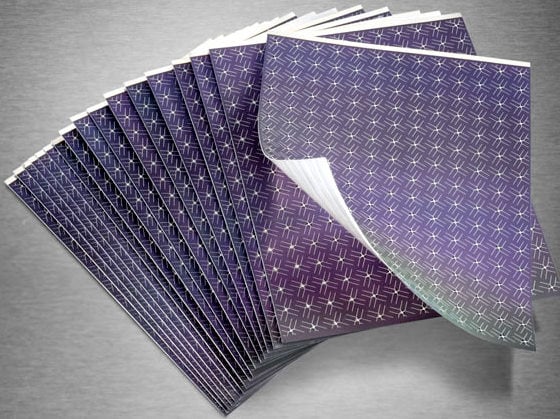Thin-Film Solar Upstart Nanosolar Slims down
Back in the mid-2000s, CIGS solar was alluring: with low-cost production techniques, these thin-film cells promised to slash the cost of solar panels. But making a business with CIGS technology has proved difficult.

Silicon Valley-based Nanosolar laid of part of its staff and is now in a “quiet period,” according to a company representative. Two reports suggest the cuts were significant, as much as 75 percent of the staff. Regardless of the magnitude, the “workforce reduction” is a sign that this well-funded and ambitious upstart could be in financial trouble and may need to change its business plans.
Founded in 2002, Nanosolar developed a printing process to make thin-film cells made of copper, indium, gallium, and selenium (CIGS) on a metal foil, an alternative to expensive vacuum-based methods. The company has capacity to make 100 megawatts worth of panels per year and, in its labs, has achieved 17 percent efficiency, about the same as standard crystalline silicon cells.
The company, which received seed funding from Google founders Sergey Brin and Larry Page, has raised more than $450 million from venture investors. It invested in large factories in California and Germany and targeted the utility solar market where thin-film cells, which tend to take up more space per watt, have generally done well.
Despite Nanosolar’s innovative process (See, Advanced Solar Panels Coming to Market), thin-film solar technology has lost its cost advantage to traditional silicon panels, driven by a massive investment in manufacturing capacity by Chinese producers. A number of CIGS solar companies have been sold off or folded.
Another Silicon Valley CIGS startup, Miasole, last year was acquired at a great loss to investors to Chinese energy project developer, Hanergy Holdings, which also acquired CIGS startup Solibro from QCells in Germany. Austin, Texas-based Heliovolt attracted funding from SK Innovations in Korea to fund its initial production and Stion has also forged deals with Asian manufacturers. These deals suggest that the CIGS technology is still viable, even if the company ownership has changed.
CIGS has long proven to be a difficulty process to master, but other thin-film solar companies have had similar difficulties keeping pace with rapidly falling solar prices. Abound Solar, which made cadmium telluride solar cells, went bankrupt and General Electric needed to delay introduction of its thin-film solar technology to achieve higher efficiencies.
Keep Reading
Most Popular
Large language models can do jaw-dropping things. But nobody knows exactly why.
And that's a problem. Figuring it out is one of the biggest scientific puzzles of our time and a crucial step towards controlling more powerful future models.
The problem with plug-in hybrids? Their drivers.
Plug-in hybrids are often sold as a transition to EVs, but new data from Europe shows we’re still underestimating the emissions they produce.
Google DeepMind’s new generative model makes Super Mario–like games from scratch
Genie learns how to control games by watching hours and hours of video. It could help train next-gen robots too.
How scientists traced a mysterious covid case back to six toilets
When wastewater surveillance turns into a hunt for a single infected individual, the ethics get tricky.
Stay connected
Get the latest updates from
MIT Technology Review
Discover special offers, top stories, upcoming events, and more.